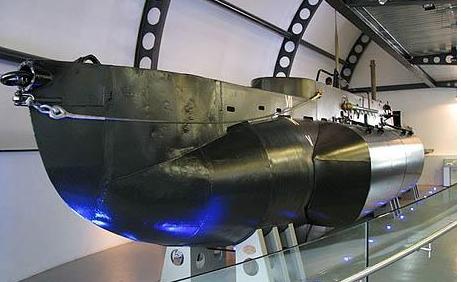
What a great name for a great man. Fair winds and following seas Lieutenant Commander Max Shean, RN.
Lieutenant-Commander Max Shean, who has died aged 90, was one of the small band of young men who, in the face of extraordinary peril, carried the sea war into enemy harbours; in the process they won a total of 68 awards for bravery, including four VCs; for his own exploits, Shean received a DSO and Bar.Read it all.
His first mission was Operation Source, the attack by a flotilla of X-craft on the German battleship Tirpitz in north Norway in September 1943. The X-craft were manned by passage crews and towed there by parent submarines, while attack crews, including Shean's, prepared themselves in the towing vessels.
Disaster struck, however, when Shean's X-9, behind Syrtis, broke her tow and the passage crew was lost. The towrope became tangled round Syrtis's port propeller, and Shean, whose diving suit was in X-9, plunged over the side into the freezing waters. Wearing overalls weighted with steel bars in the pockets, Shean repeatedly duck-dived until he could free the tangled rope. Knowing that, if attacked from the air, Syrtis would dive and abandon him on the surface, Shean was more frightened than he had ever been; and when he was hauled on board, the submarine's commanding officer rewarded him with a brusque "Well done!"
One of the lessons of Operation Source was the potential for confusion during multiple attacks; so on Operation Guidance, in April 1944, Shean, now in command of X-24, was towed by Sceptre to Bergen, Norway, to make a solo attack on a large floating dock.
Shean successfully penetrated the fjords to reach the harbour, but faulty intelligence caused him to lay X-24's explosive charges under a 7,800-ton German merchant ship, Barenfels, instead of the floating dock. Otherwise it was a model attack, and 24 hours later, sick and suffering from headaches caused by the stale air in the boat, Shean and his crew rendezvoused at sea with Sceptre. He was awarded the Distinguished Service Order for his great courage, skill and determination in a most hazardous enterprise.
Following D-Day, Shean's flotilla was deployed to the Far East in command of an improved craft, XE-4. When Admiral Chester Nimitz, Commander-in-Chief, Pacific Ocean Areas, and an experienced submariner, saw his first XE-craft he declared it was a "suicide craft" which had no place in the Allies' order of battle. But when orders came from Washington to cut two underwater telegraph cables off Japanese-occupied Saigon, he found that the British midget submarines were the only force capable of achieving this.

No comments:
Post a Comment